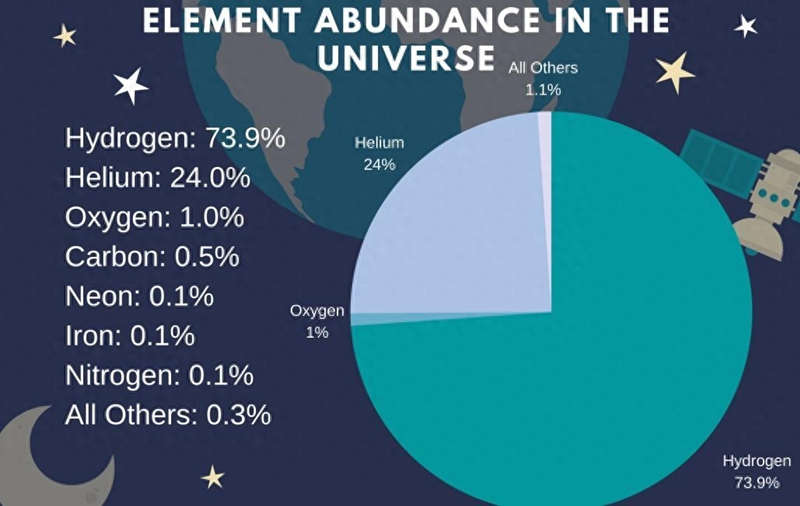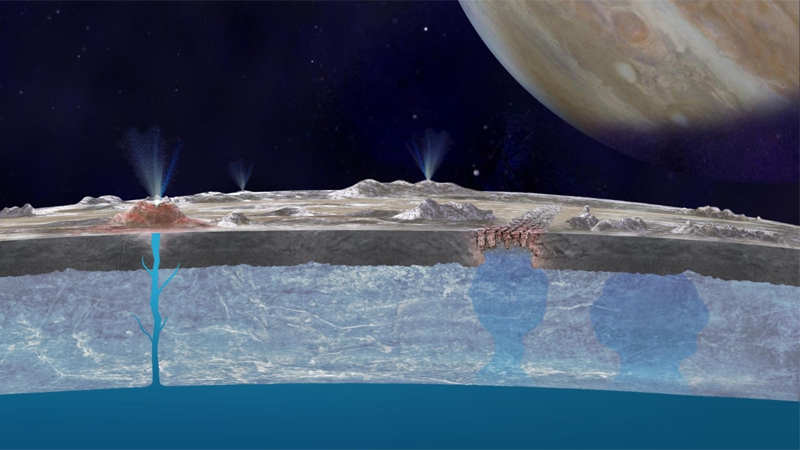The search for extraterrestrial life is a topic that captivates us. After all, in this vast universe, it’s hard to believe that life exists only on Earth. In fact, scientists have been dedicated to the study of searching for extraterrestrial life in recent days.
However, in these studies, scientists sometimes appear a bit “stubborn.” They tend to use Earth as a reference point when searching for potential extraterrestrial life. For example, scientists define a range around a star where liquid water could exist as a “habitable zone” and consider planets within this zone as prime candidates for investigation. The reason behind this approach is that Earth itself lies within the habitable zone of our Sun.

However, life on Earth is carbon-based, and theoretically, life could take on various other forms, such as silicon-based, boron-based, ammonia-based, and more. Considering the immense mysteries of the universe, we can even speculate that besides these theoretical life forms, there might be unimaginable ones, like gaseous life, plasma life, or pure energy-based life.
This means that extraterrestrial life in the universe may be vastly different from life on Earth and could thrive in entirely different environments. So why do scientists always use Earth as a standard when searching for extraterrestrial life? In fact, scientists have provided three main reasons to explain this.

The first reason is that while we cannot deny the possibility of other forms of life, we also cannot be certain of their existence. So far, the only confirmed form of life is carbon-based life on Earth. Therefore, using Earth as a reference point to search for extraterrestrial life ensures that we don’t stray too far off course.
Human capacity to explore the universe is limited. Without any constraints, we would need to scan and analyze all the planets in the universe indiscriminately, which is clearly unrealistic.

The second reason is that the relative abundances of various elements in the observable universe differ significantly. The top four elements are hydrogen (about 73.9%), helium (about 24%), oxygen (about 1%), and carbon (about 0.5%). Hydrogen, oxygen, and carbon are all essential elements for carbon-based life. This implies that, at least in the observable universe, carbon-based life has the highest probability of existence.
Furthermore, the activities of carbon-based life are based on a variety of chemical reactions, which require a suitable solvent to dissolve the necessary substances for these reactions to occur. Water, composed of the most abundant hydrogen and the third most abundant oxygen, is widespread in the universe. Its simple molecular structure, wide range of pressure and temperature for liquid state, and strong polarity make it an ideal solvent for carbon-based life.

Considering these two reasons, using Earth as a standard to search for extraterrestrial life is considered the most accurate, straightforward, and likely path to success. So what is the third reason? The answer is that it can pave the way for the future of human survival and development.
Although Earth is known as the “habitable planet,” it will not remain in its current state forever. Over time, Earth will become inhospitable. Apart from uncertain factors like asteroid impacts and super volcanic eruptions, the Sun itself is gradually getting brighter, with its radiation output increasing.
According to scientific estimates, following the Sun’s trend of brightening, in about one billion years, the average surface temperature of Earth will reach 47 to 70 degrees Celsius. At that point, Earth’s oceans will evaporate, and humans will not be able to survive. In the distant future (around five billion years from now), the Sun will run out of its core “fuel” and eventually die, turning the entire solar system into a lifeless world.
So, using Earth as a standard to search for extraterrestrial life is essentially like searching for a “second home” for humanity in the cosmos. Each time we discover a planet suitable for Earth-like life, it represents a potential refuge for humanity in the future. Although the current capabilities of humanity do not allow for interstellar travel over vast distances measured in light-years, this does not mean that future humans won’t possess such capabilities.
In conclusion, scientists’ explanations are enlightening. It’s like saying, “Take things one step at a time.” In the pursuit of extraterrestrial life, while we cannot dismiss the possibility of other life forms, we should start with the most accurate, straightforward, and likely path to success.
More UFOs and mysterious files, please check out our YouTube channel: MysFiles
What NASA found on Mars in 2023? New Evidence of life on Mars?








